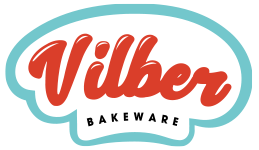When it comes to baking, choosing the right pan is just as important as selecting the perfect recipe. Cake pan sizes rectangle are among the most versatile tools for bakers. They are ideal for creating everything from sheet cakes to layered desserts for family gatherings, weddings, and professional events. Understanding the dimensions, servings, and uses of rectangular cake pans will help you bake like a pro.
Why Use Rectangular Cake Pans?
Rectangular cake pans are popular because of their practical shape and serving capacity. Unlike round pans, rectangular pans offer:
- Easy Slicing: Their straight edges make cutting even slices simple and precise.
- More Servings: Rectangular cakes accommodate more servings, making them perfect for large gatherings.
- Decorating Flexibility: The flat surface provides a clean canvas for elaborate designs, messages, or fondant.
Whether you’re baking a single-layer birthday cake or preparing tiered cakes for a wedding, rectangular pans deliver consistent results with minimal effort.
Standard Rectangular Cake Pan Sizes
Knowing the standard cake pan sizes rectangle helps you determine the right pan for your baking needs. Below are the most common sizes, along with their approximate servings:
| Pan Size (inches) | Servings (Party Size) | Servings (Wedding Size) |
| 9 x 13 | 24 servings | 35 servings |
| 11 x 15 | 35 servings | 50 servings |
| 12 x 18 | 54 servings | 72 servings |
- Party Size Servings: These are larger, casual slices typically served at birthdays or informal events.
- Wedding Size Servings: Smaller, more formal slices suited for weddings and special occasions.
Choosing the Right Rectangular Cake Pan
Selecting the correct cake pan size depends on the occasion, number of servings, and the recipe you’re using. Here are some tips to help you make the best choice:
- Small Gatherings: A 9 x 13-inch pan is perfect for small parties or family gatherings, serving around 24 people.
- Medium-Sized Events: Use an 11 x 15-inch pan for events with 35–50 guests, such as baby showers or office parties.
- Large Celebrations: For weddings, reunions, or larger events, a 12 x 18-inch pan is ideal. It serves over 50 people while maintaining even portions.
Baking Tips for Rectangular Cake Pans
To get the best results when using rectangular cake pans, follow these key tips:
- Grease and Line the Pan: Grease the pan thoroughly and use parchment paper to prevent the cake from sticking.
- Measure Ingredients Accurately: Rectangular pans require precise batter measurements to ensure the cake bakes evenly.
- Use Baking Strips: To avoid doming, wrap the pan with baking strips for even heat distribution.
- Don’t Overfill: Fill the pan no more than 2/3 full to allow the batter to rise without spilling.
- Check for Doneness: Insert a toothpick into the center of the cake; if it comes out clean, the cake is ready.
By following these steps, you’ll ensure your rectangular cakes turn out perfectly baked every time.
Creative Uses for Rectangular Cake Pans
Rectangular pans are not just for cakes—they are multi-purpose tools in the kitchen. Use them to bake brownies, casseroles, bread pudding, or even layered lasagna. Their versatility makes them an essential item for every baker’s toolkit.
For professional bakers, rectangular pans are a top choice for creating large, sheet-style cakes for decorating. You can also cut rectangular cakes into smaller pieces for custom shapes, such as letters or numbers, for birthdays and anniversaries.
Understanding cake pan sizes rectangle is crucial for successful baking. Rectangular pans provide efficiency, versatility, and professional results, whether you’re baking for a small group or a large event. By choosing the right pan size and following baking best practices, you can create stunning cakes that delight your guests and make every celebration special.
Investing in a variety of rectangular cake pans ensures you’re prepared for any occasion, big or small.

